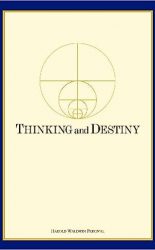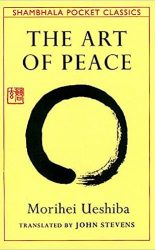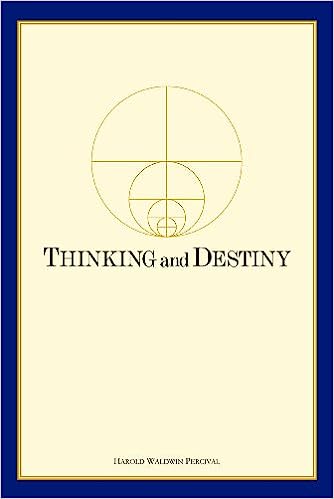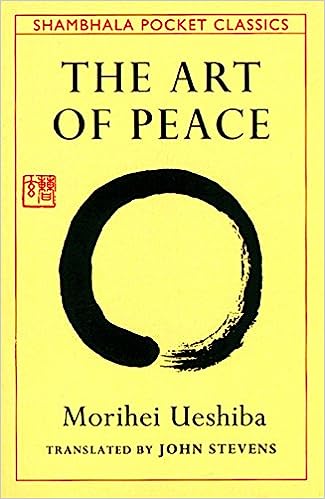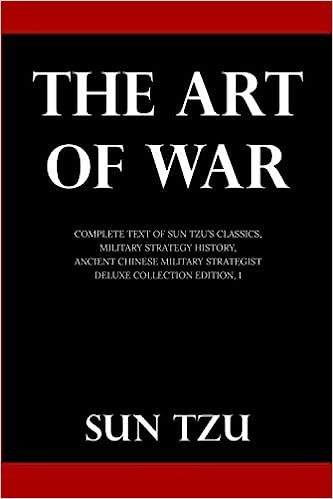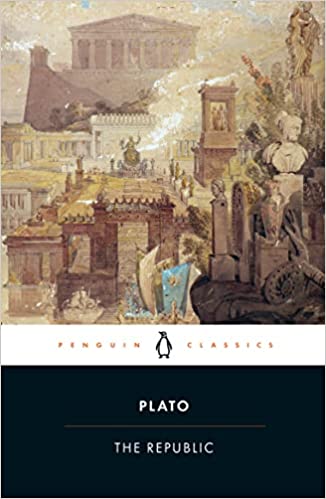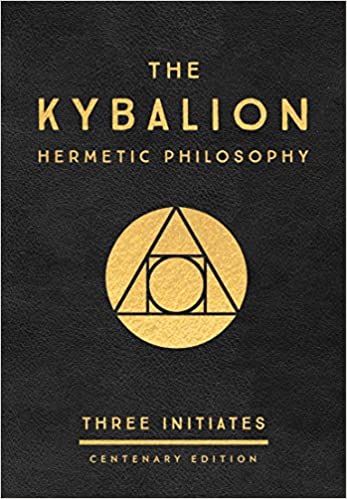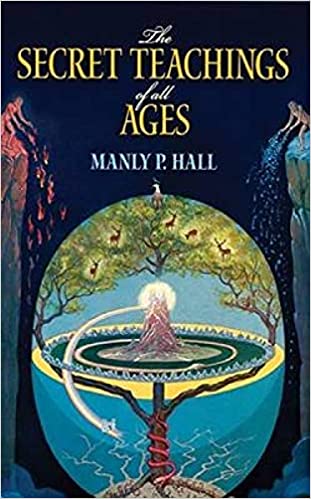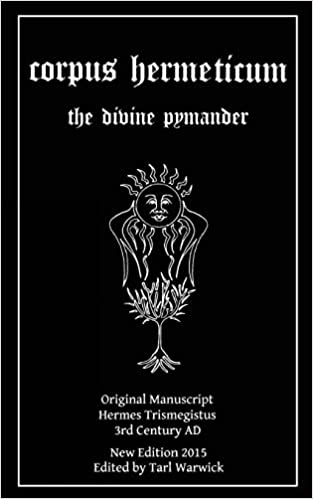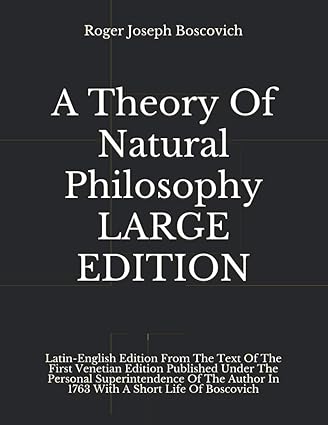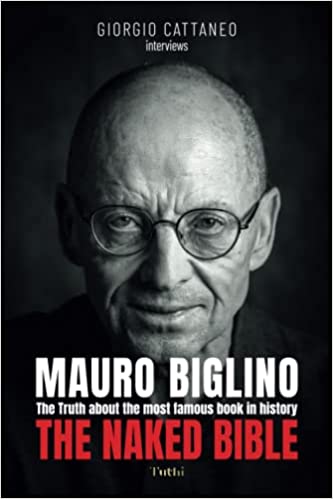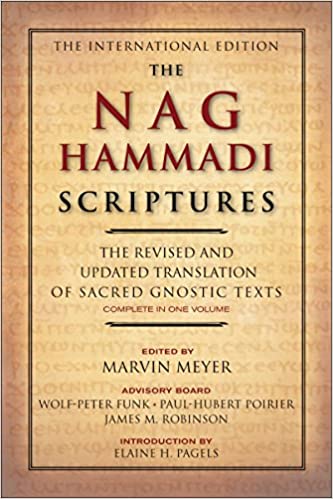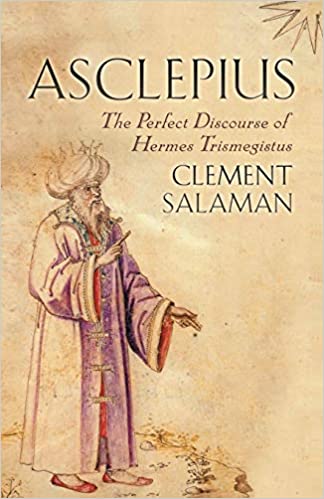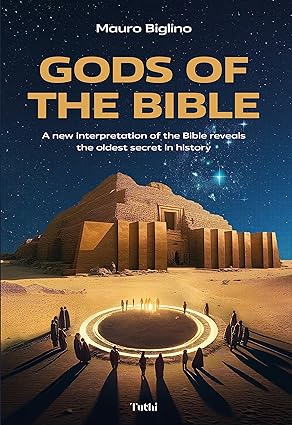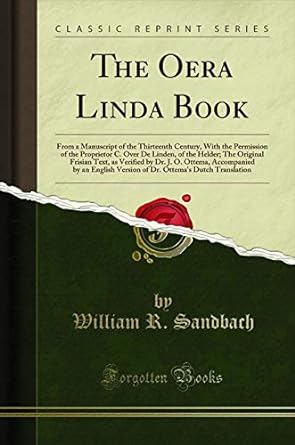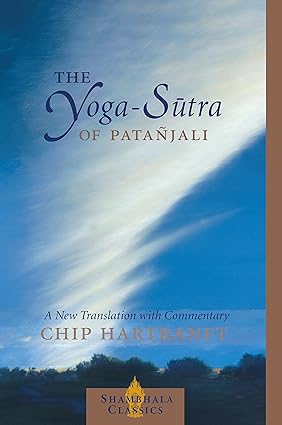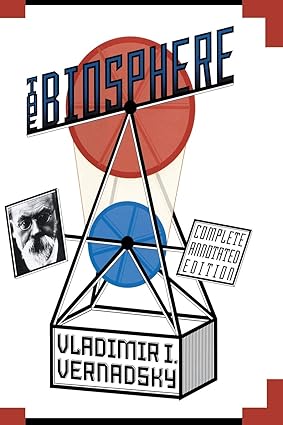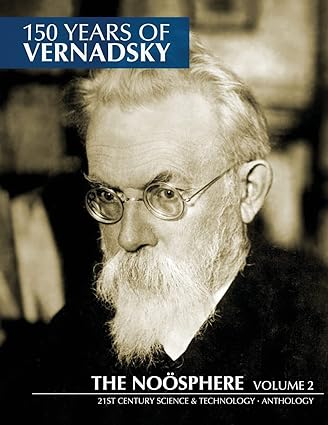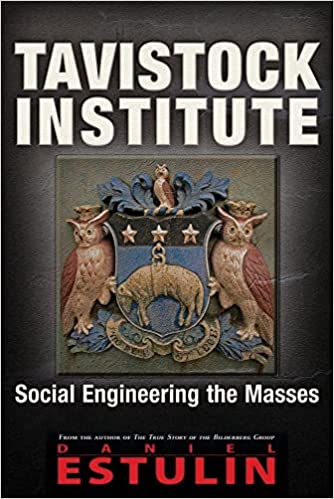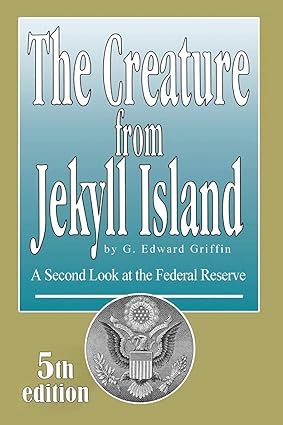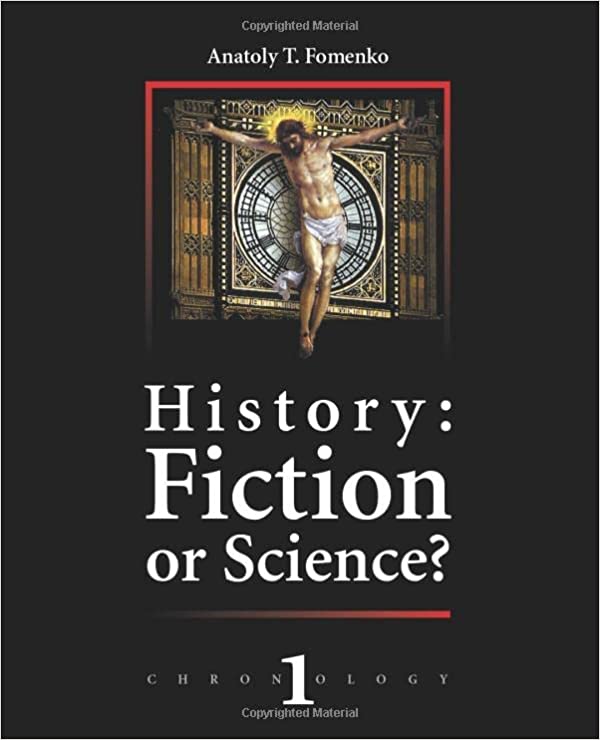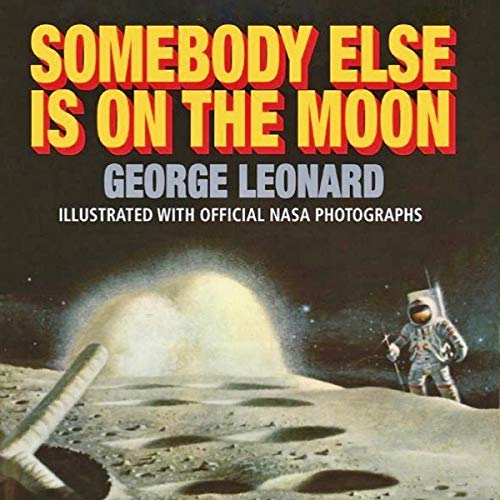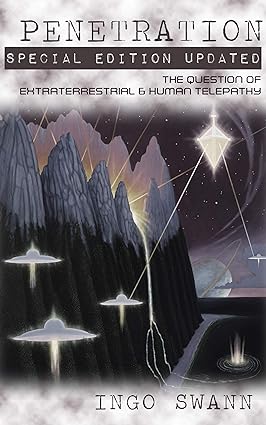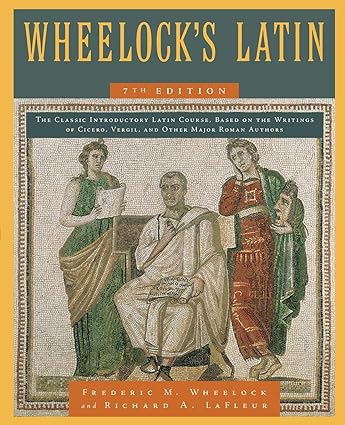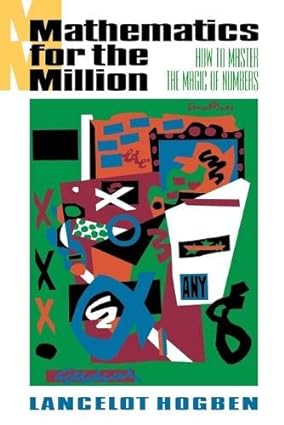LIBRARY
"Do not seek to follow in the footsteps of the wise; seek what they sought."
- Matsuo Basho
philosophy
Thinking and Destiny (Harold W. Percival)
“Thinking and Destiny” by Harold W. Percival provides a detailed understanding of the Self, including the conscious, subconscious, and superconscious aspects, and explores the concept of destiny and how it is shaped by our actions and thoughts.
The Art of Peace (Morihei Ueshiba)
“The Art of Peace” is a book that draws upon the talks and writings of Morihei Ueshiba, the founder of Aikido, who is said to have written it as the next iteration from Sun Tzu’s “Art of War.” It provides a unique perspective on warfare, serving as a compelling alternative to other classic texts such as Musashi’s Book of Five Rings and Sun Tzu’s Art of War.
“The Art of War” is an ancient Chinese military treatise written by Sun Tzu during the Late Spring and Autumn Period (5th century BC). The book is composed of 13 chapters that cover various skills related to warfare and military strategy. It was part of the Seven Military Classics and has influenced Eastern and Western military thinking, business tactics, legal strategy, and lifestyles for over 1,500 years. It remains the most influential strategy text in East Asian warfare.
philosophy
"Thinking and Destiny" by Harold W. Percival provides a detailed understanding of the Self, including the conscious, subconscious, and superconscious aspects, and explores the concept of destiny and how it is shaped by our actions and thoughts.
"The Art of Peace" is a book that draws upon the talks and writings of Morihei Ueshiba, the founder of Aikido, who is said to have written it as the next iteration from Sun Tzu's "Art of War." It provides a unique perspective on warfare, serving as a compelling alternative to other classic texts such as Musashi's Book of Five Rings and Sun Tzu's Art of War.
"The Art of War" is an ancient Chinese military treatise written by Sun Tzu during the Late Spring and Autumn Period (5th century BC). It was part of the Seven Military Classics and has influenced Eastern and Western military thinking, business tactics, legal strategy, and lifestyles for over 1,500 years. It remains the most influential strategy text in East Asian warfare.
Plato’s “The Republic” is a dialogue between Socrates and three other individuals about the ideal society and individual, touching on questions about goodness, reality, and knowledge. It also covers education and the role of men and women as guardians. Plato envisions a harmonious state led by philosopher-kings.
"The Kybalion" presents a modern interpretation of the Hermetic philosophy attributed to Hermes Trismegistus, adding a fresh perspective to medieval Hermetic texts. It covers the seven Hermetic principles in detail, making it a valuable resource for both new and experienced readers.
Manly P. Hall's The Secret Teachings of All Ages covers a wide range of fascinating topics including astrology, Egyptian magic, Kabbalah, and Masonry. It explores arcane rituals and secret societies throughout history, from classical antiquity to Christianity, Rosicrucianism, and Freemasonry.
The Corpus Hermeticum is a key work in the Hermetic Tradition, based on ancient philosophical materials dating back to the 3rd or 4th century AD. Credited to Hermes Trismegistus, it covers topics such as astronomy, science, nature, and theology. Presented in a discursive format, the work explores the philosophy of "as above, so below" and delves into the purpose of life, the nature of good and evil, and the process of existence.
religion & science
Roger Joseph Boscovich, an 18th-century polymath, proposed a natural philosophy theory centered on the idea of "force" as the essential element binding all physical and imperceptible phenomena. Rejecting the concept of continuous and indivisible matter, he introduced the notion of discrete, point-like particles with attractive and repulsive forces acting over short distances. When you see a picture of Nicola Tesla inside a cage with lightning shooting all around him, notice he is reading a book. This is the book he is holding.
Biglino is a highly regarded translator who works with both the Catholic Church and Jewish Rabbis. He is considered an expert in biblical knowledge and has even been sought out by the Vatican for his translations. His book "The Naked Bible" will revolutionize your understanding of the Bible and humanity's relationship to its historical context.
The Nag Hammadi Scriptures, a collection of Gnostic manuscripts found in Egypt in 1945, is a significant discovery comparable to the Dead Sea Scrolls. It includes the Gospel of Thomas, Mary, and Judas, among other texts, and provides new insights into early Christianity and ancient beliefs. The Coptic writers of these manuscripts also criticized the early Christians and the Talmudarians in their writings.
Sabbatai Zevi declared himself the Messiah in 1666, gathering over a million followers who believed sin could bring redemption. His successor, Jacob Frank, founded Frankism, which encouraged sexual promiscuity and defied religious taboos. Frank joined the Illuminati, whose goal was to create a communist New World Order by undermining global religion and power structures.
"The Asclepius" is a philosophical book by Hermes Trismegistus, an Ancient Egyptian sage. It explores profound philosophical questions, through a conversation about secrets, including the nature of the One, the gods' role, and the human being's stature, offering spiritual guidance and insight into ancient Egyptian beliefs. The book's views also reflect Gnostic beliefs that influenced early Christianity.
A new Bible interpretation reveals history's oldest secret by exploring the Bible literally. It exposes the authors' original intent, distinct from modern theological perspectives. Misinterpretations, stemming from aligning the text with Western theology, led to significant distortions and mistranslations. These alterations eclipse even major printing errors, shaping our understanding for centuries while remaining largely unnoticed.
The Codex Oera Linda, delves into the history, culture, and traditions of a legendary Frisian people. It offers insights into ancient cultures and lost knowledge, covering a wide historical range from ancient eras to the Middle Ages. The manuscript touches on various topics including creation stories, religious beliefs, societal laws, and other aspects of Frisian life.
Compiled in the second or third century CE, the Yoga-Sutra is a road map of human consciousness—and a particularly helpful guide to the mind states one encounters in meditation, yoga, and other spiritual practices. It expresses the truths of the human condition with great eloquence: how we know what we know, why we suffer, and how we can discover the way out of suffering.
Vladimir Vernadsky, a visionary scholar, linked life on Earth to the broader cosmos, foreseeing it as a cosmic phenomenon. He proposed that changes in the Sun's pressure could impact Earth's biosphere, altering the Sun's color from yellow to white. His theory suggests a period of biosphere enhancement and dismisses concerns of imminent food production issues, overpopulation, or climate crises. Vernadsky emphasized humans' crucial role in shaping Earth's processes, highlighting our impact on the biosphere and geochemistry. This perspective underscores humanity's pivotal role in planetary formation.
The concept of the Noosphere involves lifting calories out of the biosphere into the realm of thought. This elevation of thought enhances the biosphere, making it more potent, as we actively engage and strengthen the natural cycles within the biosphere throughout our lives.
Social sciences, space & history
This book is a must-read about mind control and how the masses are manipulated. It's concise and straightforward, making it easy to understand. You can quickly get up to speed and share it with others to help them see how they're being influenced. Once you know how Tavistock is manipulating you, their tactics lose their power.
"The Creature from Jekyll Island" is a book that delves into the creation of the Federal Reserve System in the United States. The book sheds light on the circumstances surrounding the Federal Reserve's establishment, revealing the power plays, motives, and implications behind its formation. It discusses the impact of central banking on the economy, monetary policy, and its potential consequences for individuals and society.
"History: Fiction or Science?" challenges traditional history, disputing ancient chronology. Authored by Dr. Fomenko, it exposes how political motives and flawed clerical timelines shaped our accepted history. The book exposes how the widely accepted historical discourse, established between the 16th and 19th centuries, was crafted with political motives and erroneous clerical chronology by figures like Joseph Justus Scaliger and Dionysius Petavius.
George H. Leonard, a former NASA scientist, unveiled a hidden narrative surrounding the moon exploration. He revealed extensive evidence suggesting the presence of an advanced civilization on the Moon, including massive mechanical rigs, geometric ground markings, towering lunar structures, and complex infrastructure across craters. This discovery, long known to space agencies and esteemed scientists, highlights the existence of intelligent life on the Moon.
Psi researcher Ingo Swann unveils encounters with a clandestine "deep black" agency focused on UFOs, extraterrestrials, and ET telepathy. The book details secret meetings near Washington DC and an Arctic Circle site awaiting a colossal UFO's arrival over an Alaskan lake. Swann explores human versus alien telepathy, hidden lunar revelations, and queries why humanity avoids certain issues. Additionally, a newly discovered chapter delves into Swann's psychic probes of Mars, posing lingering questions until his passing in 2013.
Homeschool
For homeschool Latin instruction, consider exploring Wheelock's Latin, often regarded as the premier starting point in Latin textbooks. First published in 1945, it's a highly recommended self-taught course due to its incorporation of Latin classics, including Stoic philosophies, which enrich the content with profound thoughts. Additionally, supplementing studies with "Latin Key Words," covering the top 2000 most used words, can aid in self-testing and reinforcing vocabulary skills.
Assuming only basic knowledge, Lancelot Hogben guides readers in this renowned book through the entire spectrum of mathematics, from elementary arithmetic to calculus. Hogben's enlightening narrative is aimed at individuals intrigued by mathematics' role in contemporary society, yet hesitant due to its perceived complexity. He illustrates that mathematics is the language of size, shape, and order—a language one can grasp and find pleasure in mastering.
"History: Fiction or Science?" challenges traditional history, disputing ancient chronology. Authored by Dr. Fomenko, it exposes how political motives and flawed clerical timelines shaped our accepted history. The book exposes how the widely accepted historical discourse, established between the 16th and 19th centuries, was crafted with political motives and erroneous clerical chronology by figures like Joseph Justus Scaliger and Dionysius Petavius.
Psi researcher Ingo Swann unveils encounters with a clandestine "deep black" agency focused on UFOs, extraterrestrials, and ET telepathy. The book details secret meetings near Washington DC and an Arctic Circle site awaiting a colossal UFO's arrival over an Alaskan lake. Swann explores human versus alien telepathy, hidden lunar revelations, and queries why humanity avoids certain issues. Additionally, a newly discovered chapter delves into Swann's psychic probes of Mars, posing lingering questions until his passing in 2013.
LIBRARY
You don't need to read books to get rich. You need to read books to elevate your being from the animalistic state you've been born into.
philosophy
Thinking and Destiny (Harold W. Percival)
“Thinking and Destiny” by Harold W. Percival provides a detailed understanding of the Self, including the conscious, subconscious, and superconscious aspects, and explores the concept of destiny and how it is shaped by our actions and thoughts.
The Art of Peace (Morihei Ueshiba)
“The Art of Peace” is a book that draws upon the talks and writings of Morihei Ueshiba, the founder of Aikido, who is said to have written it as the next iteration from Sun Tzu’s “Art of War.” It provides a unique perspective on warfare, serving as a compelling alternative to other classic texts such as Musashi’s Book of Five Rings and Sun Tzu’s Art of War.
The Art of War (Sun Tzu)
“The Art of War” is an ancient Chinese military treatise written by Sun Tzu during the Late Spring and Autumn Period (5th century BC). It was part of the Seven Military Classics and has influenced Eastern and Western military thinking, business tactics, legal strategy, and lifestyles for over 1,500 years. It remains the most influential strategy text in East Asian warfare.
Thinking and Destiny (Harold W. Percival)
“Thinking and Destiny” by Harold W. Percival provides a detailed understanding of the Self, including the conscious, subconscious, and superconscious aspects, and explores the concept of destiny and how it is shaped by our actions and thoughts.
The Art of Peace (Morihei Ueshiba)
“The Art of Peace” is a book that draws upon the talks and writings of Morihei Ueshiba, the founder of Aikido, who is said to have written it as the next iteration from Sun Tzu’s “Art of War.” It provides a unique perspective on warfare, serving as a compelling alternative to other classic texts such as Musashi’s Book of Five Rings and Sun Tzu’s Art of War.
The Art of War (Sun Tzu)
“The Art of War” is an ancient Chinese military treatise written by Sun Tzu during the Late Spring and Autumn Period (5th century BC). It was part of the Seven Military Classics and has influenced Eastern and Western military thinking, business tactics, legal strategy, and lifestyles for over 1,500 years. It remains the most influential strategy text in East Asian warfare.
philosophy
Thinking and Destiny (Harold W. Percival)
“Thinking and Destiny” by Harold W. Percival provides a detailed understanding of the Self, including the conscious, subconscious, and superconscious aspects, and explores the concept of destiny and how it is shaped by our actions and thoughts.
The Art of Peace (Morihei Ueshiba)
“The Art of Peace” is a book that draws upon the talks and writings of Morihei Ueshiba, the founder of Aikido, who is said to have written it as the next iteration from Sun Tzu’s “Art of War.” It provides a unique perspective on warfare, serving as a compelling alternative to other classic texts such as Musashi’s Book of Five Rings and Sun Tzu’s Art of War.
The Art of War (Sun Tzu)
“The Art of War” is an ancient Chinese military treatise written by Sun Tzu during the Late Spring and Autumn Period (5th century BC). It was part of the Seven Military Classics and has influenced Eastern and Western military thinking, business tactics, legal strategy, and lifestyles for over 1,500 years. It remains the most influential strategy text in East Asian warfare.
Thinking and Destiny (Harold W. Percival)
“Thinking and Destiny” by Harold W. Percival provides a detailed understanding of the Self, including the conscious, subconscious, and superconscious aspects, and explores the concept of destiny and how it is shaped by our actions and thoughts.
The Art of Peace (Morihei Ueshiba)
“The Art of Peace” is a book that draws upon the talks and writings of Morihei Ueshiba, the founder of Aikido, who is said to have written it as the next iteration from Sun Tzu’s “Art of War.” It provides a unique perspective on warfare, serving as a compelling alternative to other classic texts such as Musashi’s Book of Five Rings and Sun Tzu’s Art of War.
The Art of War (Sun Tzu)
“The Art of War” is an ancient Chinese military treatise written by Sun Tzu during the Late Spring and Autumn Period (5th century BC). It was part of the Seven Military Classics and has influenced Eastern and Western military thinking, business tactics, legal strategy, and lifestyles for over 1,500 years. It remains the most influential strategy text in East Asian warfare.

